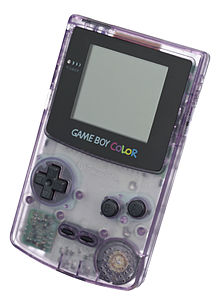Shin-Tson Wu
This article has multiple issues. Please help improve it or discuss these issues on the talk page. (Learn how and when to remove these template messages)
|
Shin-Tson Wu | |
|---|---|
 Shin-Tson Wu | |
| Born | May 12, 1953 |
| Alma mater | B.S. in Physics from National Taiwan University Ph.D. in Physics from University of Southern California |
| Known for | His works on liquid crystal displays and tunable photonic devices |
| Scientific career | |
| Fields | Physics, Optics |
| Institutions | University of Central Florida |
| Doctoral advisor | Dr. Michael B. Bass |
Shin-Tson Wu, (Chinese: 吳詩聰) is an American physicist and inventor of Taiwanese origin. He is currently a Pegasus professor at CREOL, The College of Optics and Photonics, University of Central Florida. Wu's contributions to liquid-crystal research and the resulting patent portfolio for next-generation liquid crystal displays (LCDs), adaptive optics, laser-beam steering, biophotonics, and new photonic materials, have had a major impact on display technology worldwide.
Biography[edit]

Wu was born in Nantou, Taiwan. He received his Ph.D. in Physics from the University of Southern California (Los Angeles, USA) and BS in physics from the National Taiwan University (Taipei, Taiwan). Prior to joining the University of Central Florida in 2001, he was with Hughes Research Laboratories (Malibu, California, USA) for 18 years. During that period, he made his first significant invention: mixed-mode twisted nematic liquid crystal cell, which is an integral part of high-resolution, high-contrast reflective and transflective LCDs, including direct-view, projection and wearable displays. His technologies have enabled new types of optical beam-control devices and have impacted many who have ever used an LCD product. In addition, Wu's investigations and theories about the properties of liquid crystal at infrared region have paved foundation for defense applications of liquid crystals.
Wu's current research interests at the University of Central Florida include advanced liquid crystal displays, adaptive optics, laser beam control, new photonic materials, and bio-photonics. He has co-authored 7 books, over 460 journal papers, and obtained 82 U.S. patents. Several of his patents have been implemented in display and photonic devices.
He was the founding Editor-In-Chief of the IEEE/OSA Journal of Display Technology. Currently, he is serving on the SID Honors and Awards Committee, and the SPIE Award Committee.
Awards and honors[edit]
This section of a biography of a living person does not include any references or sources. (July 2018) |
Memberships
- 2014, Among the first six inductees to the Florida Inventors Hall of Fame
- 2012, Charter Fellow of National Academy of Inventors
- 2007, Fellow of The International Society for Optics and Photonics (SPIE)
- 2004, Fellow of IEEE
- 2001, Fellow of Society for Information Displays (SID)
- 1993, Fellow of Optical Society of America (OSA)
Awards
- 2022, Edwin H. Land Medal, from OSA: The Optical Society
- 2014, Esther Hoffman Beller Medal, from OSA: The Optical Society
- 2011, Slottow-Owaki Prize, from Society for Information Display
- 2010, Joseph Fraunhofer Award/Robert M. Burley Prize, from OSA: The Optical Society
- 2010, Pegasus Professor, from University of Central Florida
- 2008, Jan Rajchman Prize, from Society for Information Display
- 2008, G. G. Stokes Award, from Society for Information Display
- 2006, University Distinguished Researcher, from University of Central Florida
- 2003, Outstanding Engineer Award, from IEEE
- 2000, Special Recognition Award, from Society for Information Display
- 1997, Special Achievement Award, from ERSO Taiwan
- 1991, Annual Best Paper Award, from Hughes Research Laboratories
- 1991, Team Achievement Award, from Hughes Research Laboratories
Honorary Titles
- 2014, Inaugural Inductee of Florida Inventors Hall of Fame
- 2013, Honorary Professor, Nanjing University, China
Books[edit]
- D. K. Yang and S. T. Wu, Fundamentals of Liquid Crystal Devices, 2nd Edition (Wiley, 2014)
- H. Ren and S. T. Wu, Introduction to Adaptive Lenses (Wiley, 2012)
- Z. Ge and S. T. Wu, Transflective Liquid Crystal Displays (Wiley, 2010)
- J. H. Lee, D. N. Liu and S. T. Wu, Introduction to Flat Panel Displays (Wiley, 2008)
- D. K. Yang and S. T. Wu, Fundamentals of Liquid Crystal Devices (Wiley, 2006)
- D. Armitage, I. Underwood and S. T. Wu, Introduction to Microdisplays (Wiley, 2006)
- S. T. Wu and D. K. Yang, Reflective Liquid Crystal Displays (Wiley, 2001)
- I. C. Khoo and S. T. Wu, Optics and Nonlinear Optics of Liquid Crystals (World Scientific, 1993)
See also[edit]
- Liquid-crystal display
- Transflective liquid-crystal display
- Blue phase mode LCD
- University of Central Florida
- University of Central Florida College of Optics and Photonics
